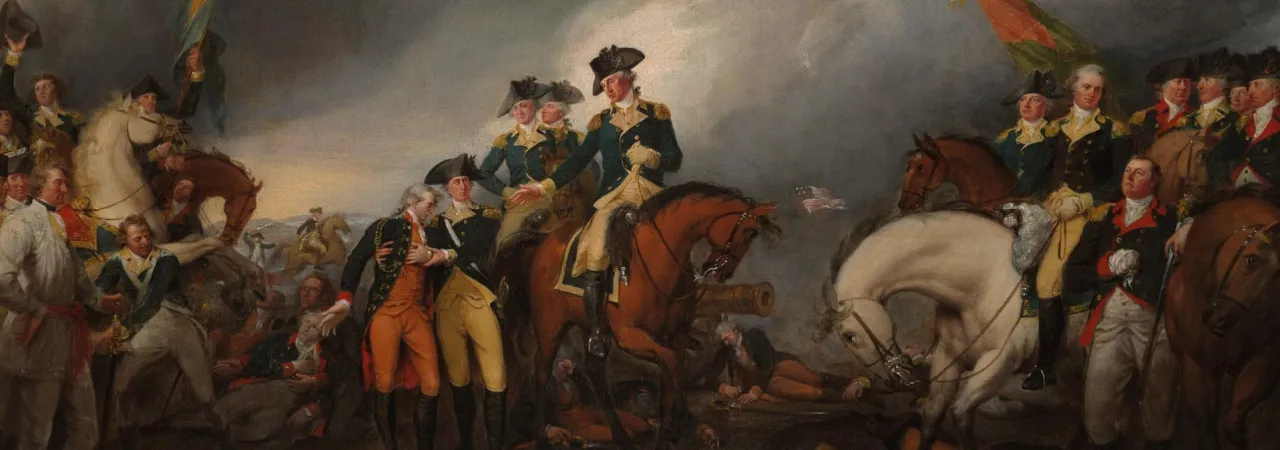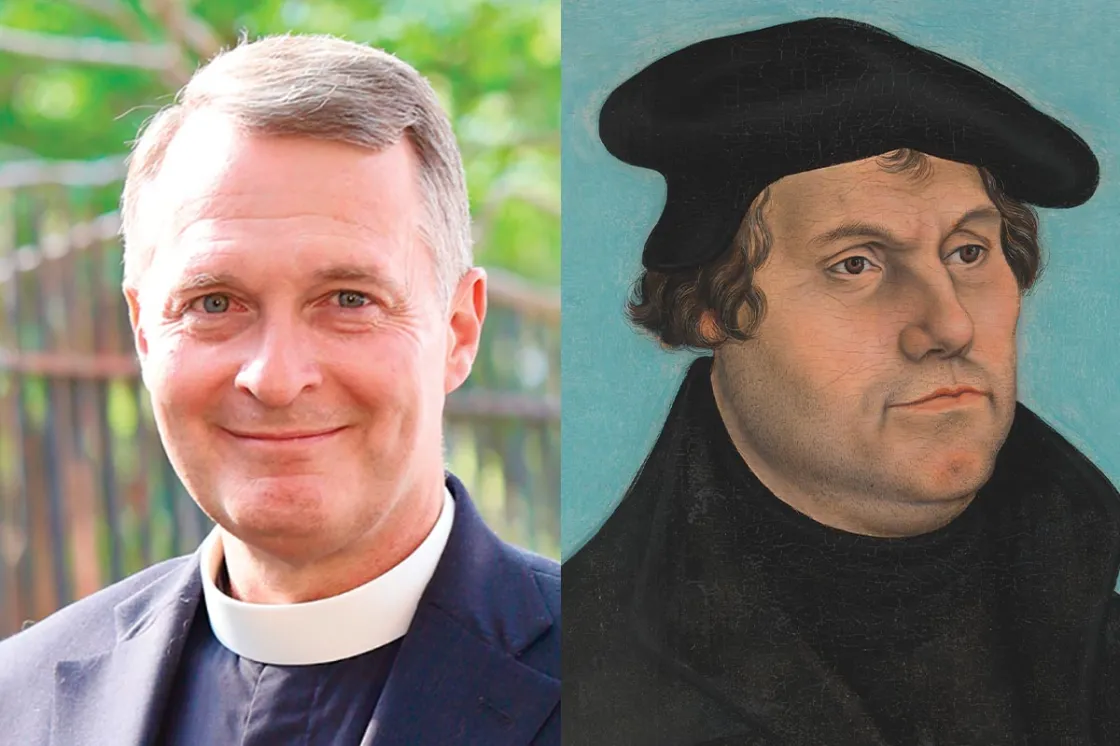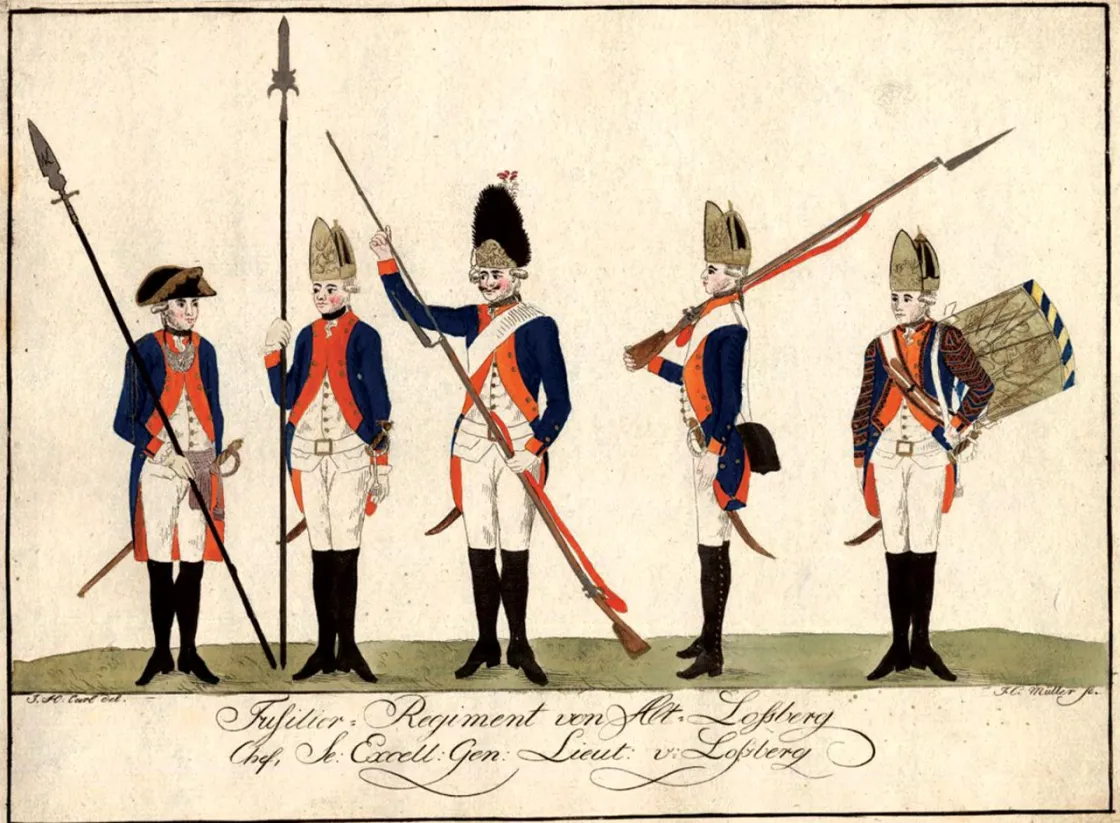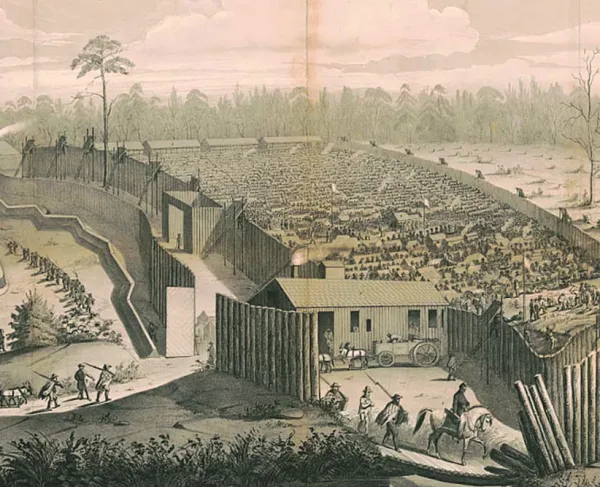Rooted in Reform & Revolution

"The Capture of the Hessians at Trenton, December 26, 1776," John Trumbull.
Ancestry and Fold3 have been helping people understand their ancestors and why they fought for causes large and small for decades. Now, Ancestry and Fold3 have joined forces with the American Battlefield Trust, so that you can find the veterans in your family's past and understand their stories and the impact on the generations that followed. You can learn more at https: www.fold3.com/projectregiment.
In addition to this recurring Hallowed Ground column, this partnership has resulted in an exclusive discount for Trust members to subscribe to Ancestry and Fold3! Check your email for this exclusive offer.
T
HE TWIN PASSIONS for history and faith that have driven the life of Rev. Jeff Miller might not be surprising considering his family tree. Before entering seminary — and, ultimately, serving as rector of the oldest congregation in the United States south of Virginia, at St. Philip’s Church in Charleston, S.C. — Miller had a successful career in the National Park Service, leading tours of many battlefields, especially Antietam.
This longtime Trust supporter can trace patriarchal branches of his family tree back to outspoken German friar Martin Luther (1483–1546), who changed history by articulating his frustration with the sale of indulgences within the Catholic Church in his famed Ninety-five Theses, jumpstarting the Protestant Reformation.

But faith is not what drove Martin Luther’s five times great-grandson — Reverend Miller’s five times great-grandfather — to come to America. Bernhard Marianus “Conrad” Luther, was an enlisted German soldier hired by the British to help defeat the cause of American independence. International genealogists at Lutheriden-Vereinigung (the Lutheran Association) — who work with descendants of Martin Luther and his wife Katharina von Bora — place Conrad in New York by 1776.
Conrad Luther was born in Erfurt, within the Germanic territory of Thuringia, in 1754, the city where his famous ancestor attended university, entered St. Augustine’s Monastery, and was later ordained. Conrad’s father, Johann Melchior Michael Luther, was a professor of medicine at Erfurt University.
During this era, many German principalities were militaristic in mindset, boasting a body of well-trained soldiers to manage both internal conflict and external struggles with other European powers. As their feudal economies suffered, German princes hired out their armies to allies. During the American Revolution, Great Britain called on the services of approximately 34,000 German soldiers, with more than half hailing from the principality of Hesse-Kassel — which neighbored Thuringia to the west.

In the General History of Cambria County, Pennsylvania, Conrad Luther is said to have served with these Hessian soldiers, but the text does not clarify which principality he was associated with. While different volumes of this book exist, each claim that Conrad deserted — but where is the question! One version says he “contrived to escape” when General Washington attacked the Hessian forces near Trenton, N.J., amid the Ten Crucial Days Campaign. Another stated that Conrad deserted while in Lancaster, Pa. Yet another version states that he joined the American army in Lancaster. Across iterations, details ultimately place Conrad in Lancaster, alongside a young woman — Elizabeth (Barth) Smith — who’d supposedly helped him escape the deadly consequences of desertion.
Questions abound. Approximately a thousand Hessian and British soldiers captured at Trenton on Christmas night of 1776 were marched to Lancaster as prisoners of war. Might Conrad have been among the captured Hessians who escaped? Or, treated well by his captors, did he take up extra work in the form of Continental service? There are a number of possible scenarios, but the lack of primary sources prevents certainty.
Regardless of Conrad’s elusive case, many German soldiers were charmed by the political and social freedoms promised by the rising American nation. Up to half of the German troops who arrived in North America did not re-cross the Atlantic at the war’s conclusion. While casualties account for a portion of that number, thousands — Conrad Luther among them — chose to stay and chase the American dream. He made an “Oath of Allegiance to the State of Pennsylvania,” with his mark recorded on November 10, 1782. He and Elizabeth became parents to a baby boy, Christian, in approximately 1784, although their marriage at Lancaster County’s First Reformed Church was not recorded until December 10, 1789.
The 1790 U.S. Census reports Conrad as the head of a five-person household in Lancaster. Following the birth of another son, William (ca. 1792), the Luther family moved to Cambria County, Pa., where they farmed and saw the births of Mary Ann (ca. 1793), Jacob (ca. 1794) and John (ca. 1800). While Elizabeth and the children became part of the local Catholic Church through Father Prince Gallitzin, there is no record for Conrad’s baptism, leading one to question: Did family history guide his choice?





